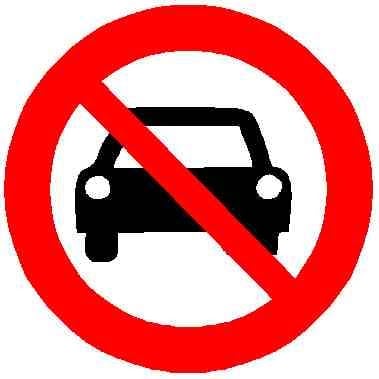Comparison left vs right for a craftsman who doesnt know which one he should buy:
-
l/r same bed size
-
r lower bed for way easier loading/unloading
-
r less likely to crash
-
r less fuel consumption and costs
-
r less expensive to repair
-
r easy to park
-
r easy to get around in narrow places like crowded construction sites or towns
-
r not participating in road arms race
-
l You get taken serious by your fellow carbrained americans because ““trucks”” are normalized and small handy cars are ridiculed.
So unless you are a fragile piece of human, choose the right one.


I agree with the sentiment of this post, but to be fair, you can also carry 3 or 4 passengers in the left vehicle, as opposed to only one in the right.
The main problem is the US fuel economy regulations actually encourage manufacturers to build bigger trucks and SUVs so they get classified into a category that has looser fuel economy requirements.
The extended cab version of the right truck would still tick all the boxes.
Off-road and towing capacity are probably the main feature you give up with that sort of design. Whether or not most people need that is a separate story.
They make kei trucks in 4x4, but you do lose ground clearance.
That being said, what kind of “off road” conditions are any of the trucks really contending with?
Muddy fields when parking at church or boy scouts or whatever.
Whats best is the kei 4x4 is probably significantly better in most off road situations due to its lighter weight and shorter wheel base. You can drive/manuever around things easier and when you are on mud or sand, the lighter weight prevents sinking.
Probably all of the conditions, considering how many of those trucks there are, but it would be fun to see an off-road shootout between the two.
Sounds like a job for Donut Media.
You are right. Still the american truck is hugely oversized, even for 5 persons and cargo. But, for the sake of the argument, imagine standing on the highway. Have a gander at the cars around you. How many people per car do you see? Exactly, 90% of the time there is exactly one person in a car. What makes the american truck an extreme waste of space an ressources, beside being a health hazard to everyone outside of the car.
Cars should get smaller, not bigger.
You’re mostly right. The main problem is that manufacturers chose to ignore the spirit of the US CAFE fuel economy regulations, and instead build everything bigger and bigger. That’s why quarter-ton trucks grew to the size of the F150 in the year 2000 when they were quite a bit smaller before.
It’s not the fault of the regulation. It is the fault of the manufacturers and to an equal extent, of consumers for preferring gigantic vehicles.
And let’s not let GM off the hook for the 1990s Suburban, which began to, quite literally, dominate the roads. Those fuckers were the original huge grocery getter, and they had truly awful turning radius and blind spots. You just couldn’t drive them safely or courteously if you tried. So of course everyone wanted more powerful and bigger vehicles to compete.
I thought it was very disingenuous of OP to not mention crew capacity between the two trucks at all. I’d assume the bigger truck also has a better towing capacity which may be required. What isn’t required is buying one of these trucks to get groceries and replace your tv every 3 years while commuting to your desk job 1 hour away.
But what about cargo capacity? The beds look pretty much the same size, although I’m sure allowed weight is drastically different
The main post claims the beds are the same size. Technically speaking in terms of volume the kei truck wins due to lower bed height (if we are using max height to pass bridges as our standard). As for weight I’m pretty sure the left truck wins out on total capacity. That said the kei truck is still a remarkably useful minitruck and i wish they had a bigger market in the west.
I would bet the standard seating for the left truck is five, but you could easily cram six in. Unless the front row is connected, then it would be even more.
The name crew can exist for reason, that how pack all your labourers in to job site, now 80% of tradesman don’t have a whole crew of labourers so the point is still there.
There name crew can exist for reason, that how pack all your labourers in to job site
Can’t tow a boat an RV or trailer with the Japanese vehicle. All things Americans do for fun. For work? The Japanese vehicle can’t haul 6,000 lbs of lumbar or steel, nor can it pull another vehicle out of a ditch.